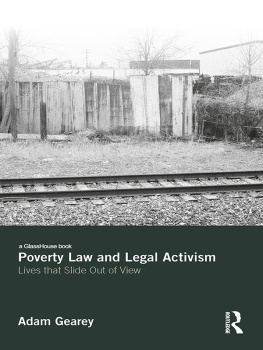Butterfly Politics

CATHARINE A. MACKINNON
The Belknap Press of Harvard University Press
CAMBRIDGE, MASSACHUSETTS
LONDON, ENGLAND
2017
Copyright 2017 by Catharine A. MacKinnon
All rights reserved
Jacket image:
art: Paul Taylor/Getty Images
fonts: Trade Gothic Bold 20
Jacket design: Graciela Galup
978-0-674-41660-4 (cloth)
978-0-674-97778-5 (EPUB)
978-0-674-97777-8 (MOBI)
978-0-674-97776-1 (PDF)
The Library of Congress has cataloged the printed edition as follows:
Names: MacKinnon, Catharine A., author.
Title: Butterfly politics / Catharine A. MacKinnon.
Description: Cambridge, Massachusetts : The Belknap Press of Harvard University Press, 2017. | Encompassing legal and political interventions from 1976 to 2016, this volume collects moments of attempts to change the inequality of women to men and reflections on those attemptsIntroduction. | Includes bibliographical references and index.
Identifiers: LCCN 2016040443
Subjects: LCSH: Sex discrimination against womenLaw and legislationUnited StatesHistory. | Sexual harassmentLaw and legislationUnited StatesHistory. | RapeLaw and legislationUnited StatesHistory. | PornographyLaw and legislationUnited StatesHistory. | Womens rightsUnited StatesHistory. | Feminist jurisprudenceUnited States.
Classification: LCC KF4758 .M327 2017 | DDC 342.7308/78dc23
LC record available at https://lccn.loc.gov/2016040443
for the last woman I talked with and the next baby girl born
CONTENTS
You dont see something until you have the right metaphor to let you perceive it.
Robert Stenson Shaw
The butterfly effect was coined in 1972 by Konrad Lorenz in a talk titled Does the flap of a butterflys wings in Brazil set off a tornado in Texas?
Butterfly politics means the right small human intervention in an unstable political system can sooner or later have large complex reverberations. As an organizing metaphor and central conceit for this volume, it coheres forty years of flights of activism that, through recursion in a collective context, have eventuated or are eventuating in storms, sometimes tornados, in gender relations through law.
Encompassing legal and political interventions from 1976 to 2016, this volume collects moments of attempts to change the inequality of women to men and reflections on those attempts. As advocacy, many of the pieces mark the first time a particular idea showed its face in public, an idea that has now become established or at least familiar. The work on substantive equality, torture, and rape as a genocidal weapon are examples. Some of these talks are closer to pure protest and dissent.
Almost all of these writings were spoken first; the remaining few that were written first were dialogic in conception and written by ear. In terms of their resonating effects, their musicharmonies, dissonances, rhythmsmatters as much as their words. They retain the interactive dynamics of their audiences. If the approaches to law in this volume are in some sense deeply American, meaning they come from everywhere, in their travels they have been deeply imprinted by women everywhere, becoming collaborative with the audiences to which they were, in the moments captured here, given. Even the pieces in reflective mode were conceived as moving ripples on an ongoing tide, aiminghopefully including through this present iterationnot to predict or describe but to alter their world. Some of the changes undertaken here remain in glacial near-stasis, even if tectonic shifts are gathering down deep. Some are in an ongoing process of being accomplished. Some can be considered essentially achieved in the sense of moving in the right direction. The project of every one is change.
I am regularly asked, often with a tone of incredulity, how I do what I do in law. Part of the puzzlement arises because it is apparently difficult to accept that some ideas, especially ideas that have become common currency, had an actual origin. The butterfly theory is a partial response. A butterfly politics highlights crucial dimensions of legal political activism, including the domain of action, strategic choice of moments of initiation, dynamics of intervention and blowback and its anticipation, and the collaborative effects of collective recursion.
As to the nature of the domain, if any social system is complex and unstable, it is sex inequality. Complex, among other reasons, because of its simultaneous multiple interacting variables including race and class and sexuality and age. Intrinsically unstable, not least because it is predicated on the lie of womens natural inferiority to men and mens natural superiority to women, termed difference in ideological and legal and common parlance. Life, given half a chance, refutes it every day. The extraordinary tenacity of such a system for structuring and distributing power, including hierarchy of statusmaking it politicalin the face of evidence and contestation of its false basis and some acknowledgment of its injustice has, when not taken for granted, frequently baffled analysts and frustrated activists. A major reason for its persistence is that dominant approaches to inequality have misdiagnosed the nature of the system, hence the necessary interventions to change it, including its structures, vectors, and trajectories, its flexible genius for indulgences and deprivations, including its rendering of the social status quo baseline as natural. By taking a different tack, some of the most substantial changes made in sex inequality through lawa number of which this book reflects and reflects uponhave occurred through unconventional and unprecedented approaches and arguments, usually with no institutional backing. A butterfly opening its wings can produce cyclones, or at least thunder claps, worldwide. The legal claim for sexual harassment, with the substantive theory of equality embedded in it and growing out of it, exemplifies this dynamic in spades.
Butterfly politics is one way to understand how critical intervention can affect systemic transformation in the gender system. If the appropriateness of the metaphor is recognizable, its application to legal strategy for social change, specifically to a politics of action toward ending gender inequality through law, is new. Thinking about society and politics scientifically, producing the social sciences, is based on analogy to begin with, adapting to social life tools typically first developed in the physical sciences. Other scientific metaphors, such as evolution or path dependence, Relationships matter. They matter and can be overlooked in politics as well, especially given that men and women are often found in relationship with one another. Indeed, change in the patterns of those relationships is the goal of some sex equality initiatives.
If any analysis from the physical sciences resonates with efforts to change sex inequality for those who have engaged in those efforts, rather than observed them from armchairs or towers as bystanders on the sidelines, it is one of orderly disorder in complex systems of nonlinear dynamics producing difficult-to-predict outcomes initiated from unexpected small locales. Chaos does not mean chaotic in the sense of lacking any coherence or pattern. Chaos here does not mean disorder, but that accurate predictions about where a system is headed are hard. In physical science, some phenomena, classically weather patterns, have been more accurately captured as a result. Given that male dominance has historically been regarded as inevitable as weather, and that the weather has been changed by human societies more than male dominance has, there is a certain symmetry here.
Next page









